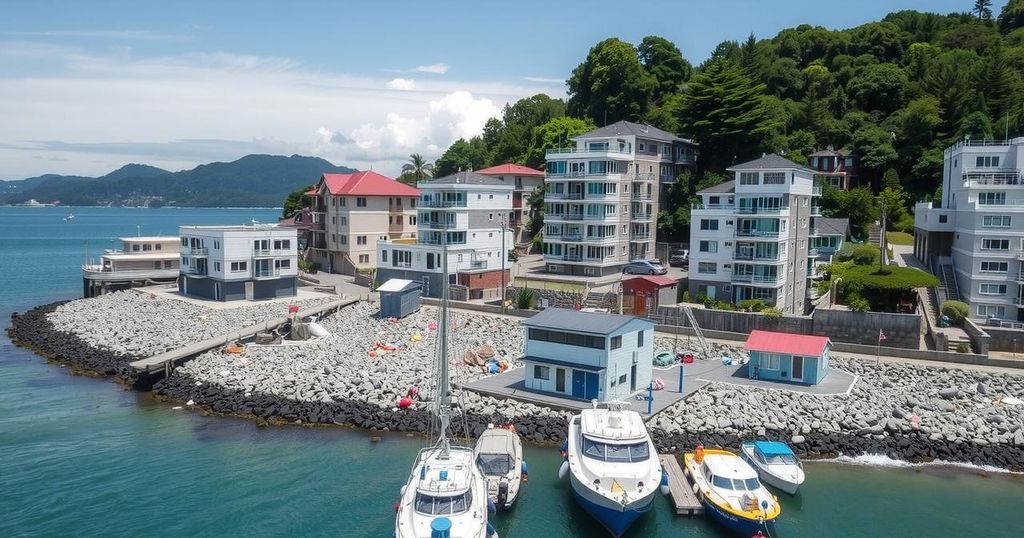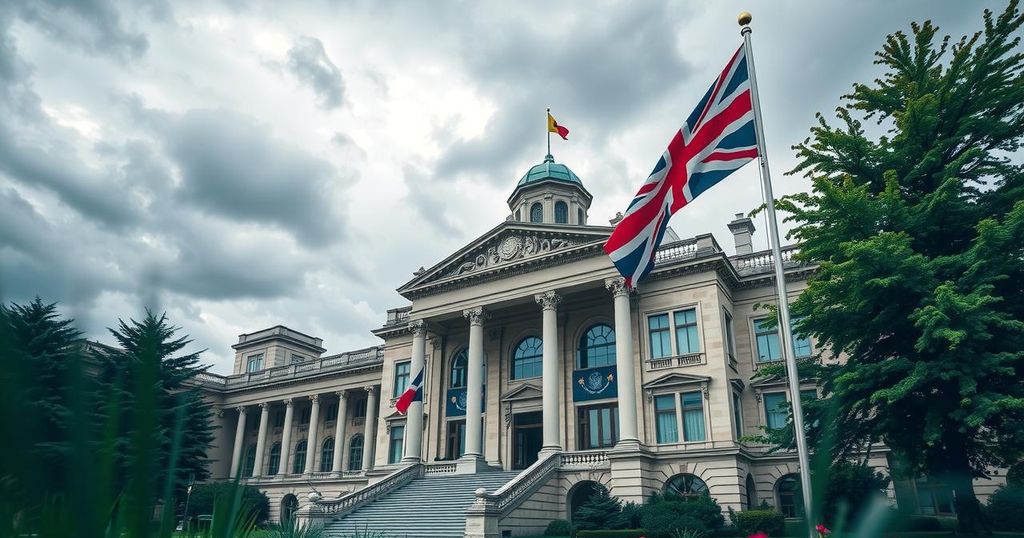Addressing the Hidden Toll of the Noto Peninsula Earthquake: One Year Later
The Noto Peninsula Earthquake, which struck on January 1, 2024, has led to long-term challenges for survivors, including significant mental health issues and cultural loss. This article explores the ‘hidden toll’ of isolation and suicide following the disaster, emphasizing the societal failures in adequately addressing these issues and advocating for holistic recovery efforts that encompass emotional support and cultural preservation alongside infrastructure restoration.
On January 1, 2024, the Noto Peninsula in Ishikawa Prefecture was ravaged by a significant earthquake measuring 7.6 in magnitude, which resulted in visible destruction—collapsed structures, impaired roadways, and fractured communities. A year post-disaster, however, the repercussions extend beyond the physical to encompass profound psychological and cultural ramifications, specifically in the form of isolation and heightened mental health issues such as suicide. The exploration of these ‘hidden tolls’ is crucial as they often go unaddressed during recovery efforts.
The death toll officially recorded over 220 individuals, but the terminology of “disaster-related deaths” often serves as a euphemism masking the rising number of suicides triggered by stress and societal disconnection post-disaster. This situation in Noto exemplifies a growing epidemic, with ongoing unmet psychological needs adding urgency to the discourse surrounding disaster recovery. Survivors expressed feelings of isolation. The elderly, particularly, experience loneliness in temporary housing settlements, leading to a pervasive sense of disconnection within the community.
A male survivor poignantly remarked, “We used to talk at the local market. I don’t know where they are or if they are okay. I don’t want to bother anyone.” This sentiment encapsulates the emotional detachment many feel amidst physical proximity to one another. Such isolation fosters conditions conducive to mental health decline; previous disaster survivors have reported elevated incidence rates of depression and suicidal thoughts. The community’s integrity is thereby undermined, as social ties, once robust, become fragile following the earthquake.
Moreover, the cultural heritage of the region suffers irreparable damage, with the loss of community gatherings, traditional crafts, and other aspects that reinforce local identity. Survivors lament losing not merely their physical homes but the communal spaces vital for cultural expression. Conversations with residents revealed a poignant truth: cultural erosion, unlike immediate physical destruction, unfolds gradually and insidiously, risking the extinction of traditions.
A small café owner encapsulated this sentiment, stating, “It is not just my café that is gone. More than that, it is the space we created—where we shared stories and passed down recipes. I worry we will lose that forever.” This reflection amplifies the profound sense of loss felt by the community, highlighting the need for societal intervention to mitigate the impact of such disasters.
The most disheartening aspect is the preventability of these lingering effects, which stem from societal failures rather than natural disasters themselves. Historical patterns reveal that society often neglects the psychological needs of individuals post-disaster. Past events, such as the Great East Japan Earthquake, demonstrated significant fallout in mental health and community cohesion, leading to worrying trends of suicide and loneliness for vulnerable populations following such calamities.
In response to the pressing concern for both mental health and cultural preservation, a paradigm shift in disaster recovery strategies is necessary. Efforts must extend beyond infrastructure restoration to encompass comprehensive emotional and cultural support for survivors. Organizations such as Civic Force exemplify how community-focused initiatives can help bridge these gaps, connecting individuals and fostering resilience.
It is vital to memorialize and document survivor narratives to prevent lessons learned from slipping into obscurity. Honoring these experiences and fostering discussion about the hidden toll of disasters can ensure future responses prioritize psychological and cultural considerations alongside physical rebuilding efforts. The essence of rebuilding is not merely to restore structures but to rejuvenate lives and community connections.
In conclusion, the aftermath of the Noto earthquake elucidates the urgent need for collaborative efforts to address the hidden tolls of natural disasters, particularly in mental health and cultural identity. The resilience of survivors must be supported through dedicated initiatives, emphasizing that recovery is a holistic process involving both emotional and communal rejuvenation. Future strategies must reflect an understanding that when disaster strikes, the effects echo far beyond immediate devastation, necessitating a vigilant and compassionate societal response.
The Noto Peninsula earthquake on January 1, 2024, caused extensive devastation, resulting in physical destruction and significant loss of life. One year post-event, the focus has shifted from the immediate impacts of the earthquake to the ongoing mental health challenges and cultural loss that communities face. This phenomenon is referred to as the ‘hidden toll’ of disasters, highlighting the often-overlooked long-term effects on individuals’ emotional well-being and community dynamics. Additionally, the article emphasizes the pervasive issues of isolation and suicide within disaster-impacted populations, where individuals experience feelings of disconnection in the aftermath. The historical context of prior seismic events in Japan serves to underscore the importance of examining the psychological fallout and cultural disintegration that too often accompany physical rebuilding efforts.
In summary, the Noto Peninsula earthquake has underscored the necessity of not only rebuilding physical structures but actively addressing the psychological and cultural ramifications that follow such disasters. Society must commit to sustaining support systems that prioritize mental health and cultural preservation to ensure that survivors are not left to navigate their recovery in isolation. Future disaster responses must incorporate lessons learned from Noto, fostering a proactive approach that values the emotional and cultural needs of affected communities against the backdrop of resilience and hope for recovery. By doing so, we can mitigate the secondary tragedies that too frequently emerge in the wake of natural disasters, safeguarding lives and cultural identities alike.
Original Source: japan-forward.com




Post Comment